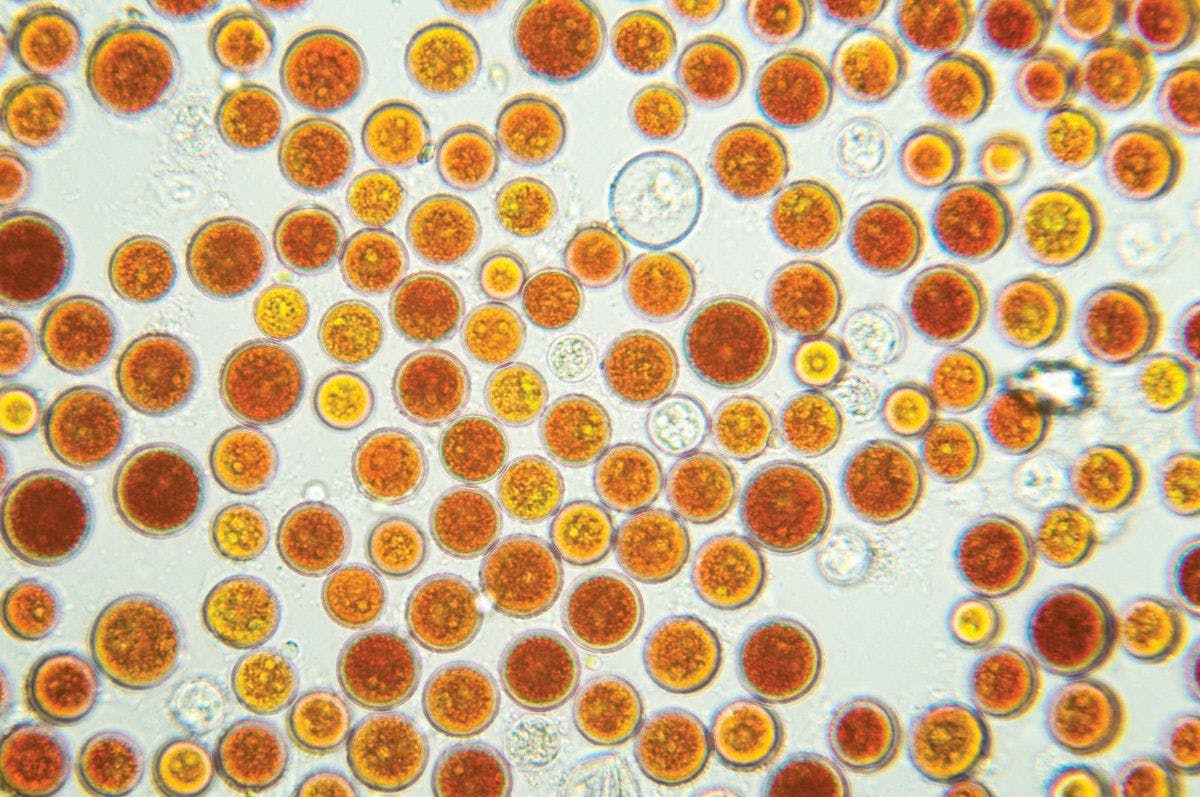Weight-Management Supplement Strategies for a Skeptical Public
One thing Americans do seem to be losing is their faith that some magic weight-loss pill can help them win this losing battle. In this article, we take a look at modernizing the weight-management supplements market.
Photo © iStockphoto.com/Willie B. Thomas

Over the years, Americans have lost none of their interest in losing weight. Unfortunately, if Centers for Disease Control and Prevention (CDC) data1 are to be believed, they haven’t lost much of their weight, either. Fully 78.6 million American adults-that’s more than a third of us-are obese, CDC says, costing the nation’s healthcare system an estimated $147 billion annually.
But one thing Americans do seem to be losing is their faith that some magic weight-loss pill can help them win this losing battle. Mintel’s “Diet Trends U.S. 2015” report2 found that 91% of Americans favor a well-rounded diet over weight-loss products for shedding pounds-a back-to-basics tilt that USDA merely reinforced with its 2015-2020 Dietary Guidelines for Americans, which emphasize whole foods and healthy lifestyles over wacky weight-loss schemes.
And who knows? The shift in thinking may catch fire and launch a new era of weight management. If it works, the results would be a triumph for public health. But they’d also be a turning point for the supplement and functional foods industries. For if consumers lean increasingly toward “old-fashioned” approaches to weight management, where does that leave a sector whose purpose is to innovate products that manage weight?
Getting Burned
The extent of consumers’ skepticism toward weight-management products is striking. According to Mintel2, sales of diet pills fell almost 20% in the year ending July 2015, which jibes with the report’s finding that consumers aren’t convinced such products are as healthy as they claim to be.
Both conclusions coincide with Chase Hagerman’s observations. “All too often,” says the brand director for Chemi Nutra (Austin, TX), “consumers’ wallets-not their excess fat-are what get burned by weight-loss products.” If that sounds surprising coming from the representative of a company that markets its own weight-management product, it shouldn’t, for Hagerman concedes that specious “magic-pill” promises still plague the category. But consumers are growing wise.
“At this point in the health-and-wellness sector,” Hagerman says, “consumers are more discerning, and with the rise of the Internet, their apprehension related to a topic can rise at the point of sale.” Though shoppers may know that diet and exercise are linchpins in their success, they also know that “a truly useless formulation,” as he puts it, is, well, truly useless. The result, invariably, is “consumer dissatisfaction and lower sales.”
In the Crosshairs
Mitch Skop, senior director, product development, Pharmachem Laboratories Inc. (Kearny, NJ), agrees. While stopping short of calling weight management a Wild West, he acknowledges that “as long as there are supplement cowboys out there promoting their foo-foo dusts and proprietary blends, there’ll be fraud, which hurts consumer confidence every time.”
Exaggerated claims from personalities like Dr. Mehmet Oz don’t help, either. “He had so much influence on how millions of Americans could lead healthier lives,” Skop reflects. But by overstating the efficacy of the products he touted, Oz and his ilk “attract negative media attention and give the whole industry a black eye.”
That black eye really got throbbing as the FTC, FDA, and states’ attorneys general began taking action against weight-management targets-like, for example, makers of the green coffee beans about which Oz was so bullish, who wound up facing an FTC lawsuit in 2015. And though the weight-management category has attracted “fringe players” and “bad actors” who generate unflattering headlines, admits Shaheen Majeed, marketing director, Sabinsa (East Windsor, NJ), he believes that FTC’s “concentrated education and enforcement program” against them “has had a positive effect in toning down claims like ‘eat pizza and lose weight while you sleep.’”
STORY CONTINUES ON PAGE 2
Their Own Worst Enemy
Still, fantastical claims seduce consumers who’ve learned the hard way-and perhaps many times over-that losing weight is simple in theory but confounding in practice. For example, Skop doesn’t dispute Mintel’s finding2 that most Americans would prefer to lose weight via healthy eating alone. But, he says, “If only it were that simple.” That same study, he notes, also showed that over 80% of respondents “felt that some foods were just too hard to resist.”
In fact, his company conducted its own survey with Customer Experience Partners and found that 40% of respondents described themselves as “somewhat” or “substantially” overweight, and 89% said they regularly take a weight-loss aid. His conclusion: “If we all ate plenty of green, leafy veggies and pea proteins and avoided sugar and starch, there’d be no weight-management sector and that would be wonderful indeed. But it just doesn’t work that way for most of us.”
Which is why the sector will continue to thrive. And it may have an even better chance of doing so now that consumers are pegging their expectations to more realistic goals. Notes Lynda Doyle, vice president, global marketing, OmniActive Heath Technologies (Morristown, NJ), rather than “jumping from one magic bullet to the next with the hope that something will eventually work,” shoppers are “becoming better informed about their supplement choices and relying more on science-supported facts and less on television pundits.” The category is still “huge,” she says, “and consumers are willing to pay a premium for products as long as they work.”
Forest for the Trees
As well they should, for the dividends may accrue not just to industry or them personally, but to public health writ large. Why? Because far more concerning than the occasional weight-management scandal is the obesity epidemic and its costs.
Hagerman cites a Center for Food Safety and Applied Nutrition (CFSAN) study3 showing that most adverse events involving supplements relayed to poison-control call centers in 2006 were minor, “and of the more significant events, caffeine and yohimbe-containing products were the primary culprits,” he says. By contrast, and for perspective, he points to CDC’s verdict4 that “obesity is a public health priority because obesity is correlated with excess morbidity and mortality.”
So if safe and effective supplements can help bend that curve, industry experts believe they should. Says Majeed, “Not every person is the same, so adding a well-designed weight-management supplement, for some, can help get results they may not be getting from diet and exercise alone.”
Metabolic Methods
Smart formulations focus “not just on losing pounds,” Doyle adds, “but, rather, on a longer-term view of health that encompasses other endpoints important to consumers.” Take metabolic health, which she says “is quickly becoming a new approach that encompasses weight wellness and healthy carbohydrate and fat metabolism.” This approach, if successful, leads not just to lost pounds, but to improved cholesterol, triglycerides, and blood-sugar levels-and to lower blood pressure, too.
Her company has developed a class of “metabolic synergizers” that includes its new Salacia extract, OmniLean. Ongoing studies have examined OmniLean’s effect on reduced carbohydrate and fat absorption, satiety, and healthy glucose maintenance, among other endpoints, Doyle says, and the product is the first to go through the company’s “rigorous” PlantActive Verification program, which “specifically characterizes both bioactive compounds and bioactivity” using DNA analysis and high-performance thin-layer chromatography (HPTLC). “This ‘fingerprint’ of actives and their activity in the body reflects the advantage of providing the multiple benefits of a healthy metabolism in a single ingredient,” she says. (Click here to read our OmniLean coverage from Natural Products Expo West 2016.)
Skop adds that an extract of white kidney bean (Phaseolus vulgaris) his company markets as Phase 2 Carb Controller also acts on metabolism. By temporarily binding alpha-amylase, the enzyme that digests starch, the ingredient allows “a portion of the carbs to pass through the system undigested,” he says. Undigested carbs translate into less caloric impact and, the thinking goes, weight loss. Though the ingredient isn’t new, its tenure on the market is evidence of its dozen-plus human studies demonstrating safety and efficacy. Consumer research also indicates that Phase 2 introduces no taste or texture differences compared to a control in a variety of carbohydrate-rich foods. Skop adds that the company now offers stick packs of the product in a sprinkle-on format marketed as DietSpice, which he describes as “a unique and tasty” blend of the extract with natural herbs and spices.
Another product that targets metabolic balance is a proprietary blend of citrus flavanone-O-glycosides from bergamot and eurypeptides from Eurycoma longifolia that HP Ingredients (Bradenton, FL) calls CitruSlim. According to Annie Eng, the company’s CEO, the product promotes anabolism, reduces the stress hormone cortisol, and activates the enzyme AMP-activated protein kinase (AMPK), which itself stimulates ketogenesis and fatty-acid oxidation in the liver and skeletal muscle. Other benefits Eng lists include inhibition of adipocyte lipolysis, lipogenesis, and cholesterol and triglyceride synthesis; proper uptake of glucose in muscles; and modulation of insulin secretion by the pancreas. In an unpublished study involving 50 moderately overweight men and women who participated in a six-week program of stress management, nutrition intervention, exercise, and supplementation with either 200 mg of CitruSlim or a placebo, the experimental group not only displayed a higher program completion rate than the placebo group-95% compared to 80%-but also showed significant loss of body weight averaging 2.7 kg, of which 2.4 kg was fat. Compare this to no significant body weight (0.78 kg) or fat (0.55 kg) loss in those taking the placebo.
Vladimir Badmaev, MD, PhD, CEO, American Medical Holdings Inc. (New York City), notes that the body’s “natural protective metabolic mechanism against obesity” can become overwhelmed if the body is “frequently barraged by food”-as often happens these days. When that barrage includes an excess of dietary fats, the results can involve activation of the endocannabinoid system (ECS) and the gradual incapacitation of liver cells, compromising their ability to oxidize and use fat for energy and leading to accelerated buildup of body fat, Badmaev explains-a sequence he calls “a truly vicious circle.” A blend of Coleus forskohlii, Salacia reticulata, and Sesamum indicum marketed as FB3 normalizes ECS activity and, by extension, fat metabolism, he says. A peer-reviewed study5 in the Journal of Functional Foods found that, along with a healthy diet and lifestyle, FB3 may prevent excess body fat buildup by interfering with excess dietary fat absorption. The product’s ultimate promise lies not in immediate weight loss, Badmaev says, “but in a gradual deactivation of the ECS, leading to improvement of metabolic functions and fatty-acid oxidation. This concept exemplifies the approach of selecting effective weight-management supplements with a focus on the causes of obesity.”
STORY CONTINUES ON PAGE 3
From Fat to Lean
C. forskohlii might also improve body composition by promoting lean body mass, if several clinical studies are to be believed. Forskolin, a labdane diterpenoid occurring naturally in C. forskohlii roots, increases both the cellular concentration and function of cyclic AMP (cAMP). Notes Sabinsa’s Majeed, cAMP is “a very important secondary messenger” that regulates the body’s thermogenic response to food and increases its basal metabolic rate. “Since thermogenesis is preferentially fueled by fatty acids derived from body fat and/or food,” he says, the body sacrifices some of its fat stores to keep the process going and is left with a relatively higher proportion of lean tissue.
Getting the body to use more of its stored fat and improve its lean-to-fat ratio is a sound weight-management strategy, says Joseph Moritz, PhD, science manager, BASF Nutrition & Health (Florham Park, NJ). “Typically, those on low-calorie diets will lose both fat and muscle,” he notes, “causing them to reach a plateau of slowed metabolism at around 10%-20% of body weight and leading to a rebound effect in weight when the diet ends.” But because muscle is a “metabolically active organ,” he continues, maintaining muscle while losing weight sets up the body for better long-term success.
Enter conjugated linoleic acid (CLA), which clinical and laboratory studies show both inhibits fat storage and increases activity in skeletal muscle cells, the furnaces that burn fat for energy. Moritz says that his company’s Tonalin CLA reduces body fat by up to 10% while increasing lean muscle mass. He adds that its “unique isomer composition developed from a patented purification process” yields “an ultra-high percentage of active isomers.” In clinical trials, subjects taking Tonalin CLA sustained fat loss “over the duration of the trials,” Moritz notes. “Compare that to the yo-yo dieting effect in which weight loss isn’t sustained.”
Are You Satisfied?
With more consumers hoping to manage weight through old-fashioned diet and lifestyle changes, “the opportunity for satiety-promoting foods and beverages is greater than ever, notes Greg Paul, marketing director/global consumer segments, DuPont Nutrition & Health (St Louis).
Satiety is a complex process that ropes in feedback from the gut to the brain, with-among other signals-higher glycogen stores in the liver telling the central nervous system (CNS) that energy is present and satiety is achieved. Majeed’s company, Sabinsa, markets a product, GarCitrin, that spurs fat metabolism in the liver, thereby stimulating gluconeogenesis and hepatic glycogen storage. Made from the fruit of Garcinia cambogia, it contains the active (-)hydroxycitric acid (HCA), which, Majeed says, is a “potent” linear competitive inhibitor of the ATP citrate lyase enzyme. “This leads to the reduction of both fatty-acid synthesis and lipogenesis,” he notes, adding that HCA also facilitates fatty-acid oxidation through activation of L-carnitine acyltransferase, “which meets the energy requirements of the body.”
The product, which contains 50% HCA and 5% garcinol, “has been found to reduce appetite levels compared to an HCA-rich natural extract,” Majeed notes. In a study of 46 overweight healthy women who took a 500-mg HCA-rich natural extract or 500 mg of GarCitrin for 12 weeks, significant differences in total body weight and composition, self-assessed appetite, and energy levels emerged between the two groups, with the GarCitrin group showing a higher activity, Majeed says.
Hagerman notes that his company’s PhosphoLean N-Oleoyl-PE + epigallocatechin gallate (NOPE + EGCG) acts as a lipid mediator, with its active compound oleoylethanolamide (OLA) binding cell-receptor class peroxisome-proliferator-activated receptor alpha (PPAR-alpha) sites in the intestine to suppress appetite.
But if that sentence alone 1) triggers bad memories from college o-chem lectures and 2) makes simply eating less and exercising more look like a better weight-management route, DuPont’s Paul notes that old-fashioned protein is a reliable and strong satiety inducer. “Specific hormones from the gut are released in the presence of protein,” he explains. “These hormones signal an area in the brain associated with food intake, creating a fullness feeling that slows and, ultimately, stops food intake.” As if that weren’t appealing enough, protein has “a very positive health halo with consumers,” Paul adds, allowing it to position a product as being friendly to weight management without limiting its reach to one segment.
As Paul puts it, “Many consumers now realize that it takes more than just a change in diet to lose weight; it takes a lifestyle change.” Savvy marketers realize this, too. “That’s why many traditional weight-loss brands have migrated to a healthy-lifestyle positioning,” he says. “Those who’ve held steadfast to a weight-loss positioning are competing for a smaller consumer base. Though there are still some winners in this market, those finding success are far fewer than in the past.”
Also read:
Diet Products Decline as Americans Trade for Well-Rounded Diets. New Mintel Report
Methylsynephrine Is Not a Dietary Ingredient, FDA Says
Limit on Added Sugar Is Biggest Change in New Dietary Guidelines for Americans
Consumers Likely Underestimate How Carbs Contribute to Weight Gain, Survey Finds
References:
- www.cdc.gov/obesity/data/adult.html
- www.mintel.com/press-centre/social-and-lifestyle/weighing-the-odds-diet-products-fall-out-of-favor-as-91-of-us-consumers-prefer-well-rounded-diets
- Haller C et al., “Dietary supplement adverse events: Report of a one-year poison center surveillance project,” Journal of Medical Toxicology, vol. 4, no. 2 (June 2008): 84-92
- www.cdc.gov/nchs/data/hus/hus14.pdf#059
- Badmaev V et al., “Preclinical and clinical effects of Coleus forskohlii, Salacia reticulata and Sesamum indicum modifying pancreatic lipase inhibition in vitro and reducing total body fat,” Journal of Functional Foods, vol. 15 (May 2015): 44-51




















